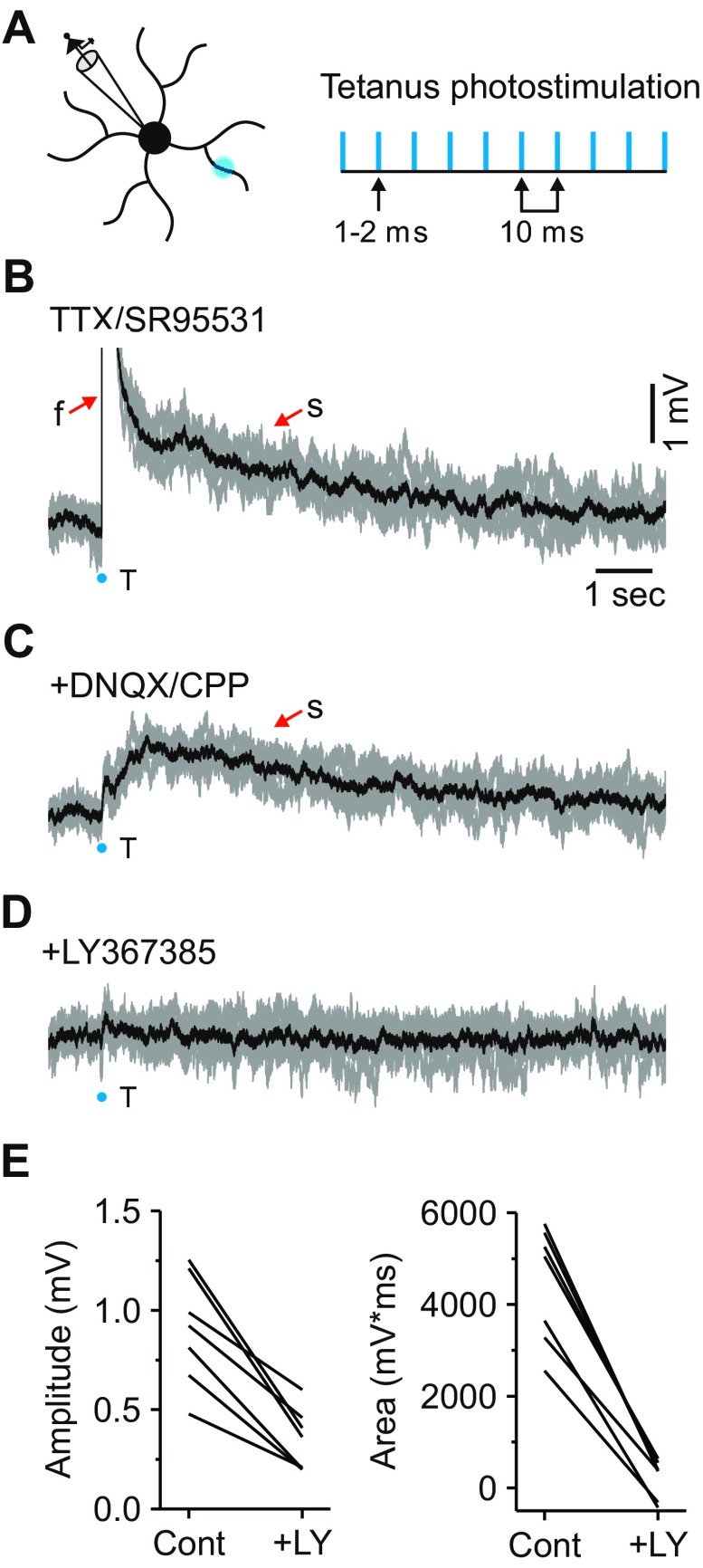Fig. 4.
Tetanic photostimulation reliably activates local mGluRs. A: schematic illustrating how mGluRs were locally activated using tetanic photostimulation protocol (10 pulses, 1–2 ms, 100 Hz). B: in TTX (1 μM) and SR-95531 (10 μM), 5 individual responses produced by tetanic photostimulation (gray traces). The onset of the stimulus is shown by the blue dot, and average response in black. Under these conditions, tetanic photostimulation (T) resulted in both a fast (f; truncated) and slow (s) excitatory potential. C: subsequent application of iGluR blockers (DNQX: 20–40 μM; CPP: 10–20 μM) eliminated the fast potential while leaving the slow potential unaffected. D: the slow potential was attenuated with the addition of the mGluR1 antagonist LY-367385 (100 μM). E: summary of the effects of LY-367385 (LY) on the slow excitatory potential isolated with iGluR blockers (Cont).

